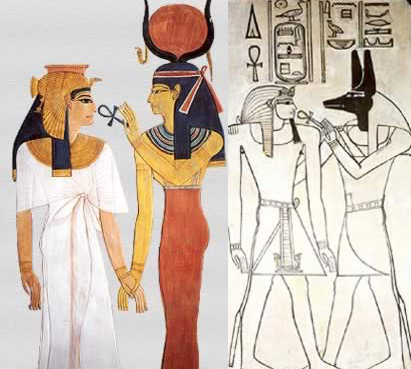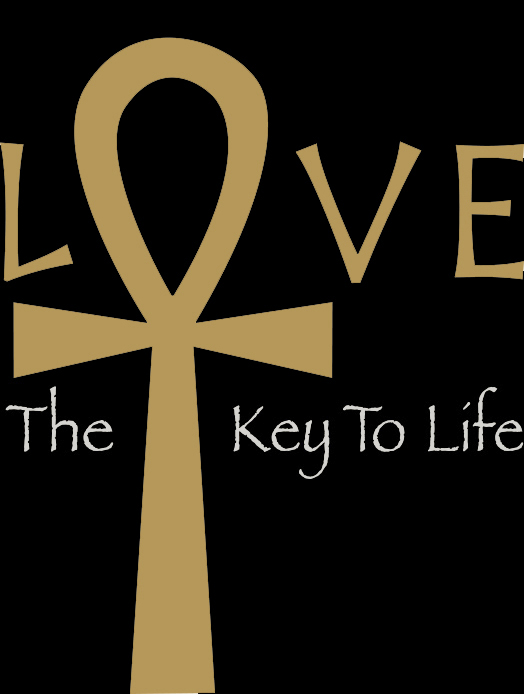
Right: Amenhotep II receives life from Anubis
HISTORY OF THE ANKH
The Ankh is a derivative of the traditional cross. It combines the circle and the cross and is sometimes called the “cross with a handle". Its form, its significance, and its origins bridge the gap between so many diverse traditions. It expresses longevity, power, love, and life and so speaks to every culture.
The symbol of the Ankh is not limited to any one religion and cannot be properly defined. It is a symbol that is alive and ever changing, an eternal mystery.
VARIOUS MEANINGS & INTERPRETATIONS OF THE ANKH

FERTILITY
The loop represents the feminine discipline (or the womb), while the elongated section represents the masculine discipline (or the penis). These two sacred units then come together to form life. The crossbar represents the children from the union.
SUNRISE
The loop represents the sun rising above the horizon, which is represented by the crossbar. The vertical section below the crossbar, the path of the sun.
ETERNAL LIFE
The loop symbolizes eternal life and the cross below it represents the material plane. It is an antenna or conduit for the divine power of life that permeates the universe.
PROTECTION
The Ankh is a powerful talisman that provides the wearer with protection from all evil forces. Moses' staff was topped with the Ankh.
SELF-REFLECTION
The Ankh mirrors the human form. The Egyptian word for mirror is Ankh.
LIFE'S JOURNEY
The Ankh's form resembles that of a simple sandal strap, reminding us that life is a secret journey each of us must make, one step at a time...
